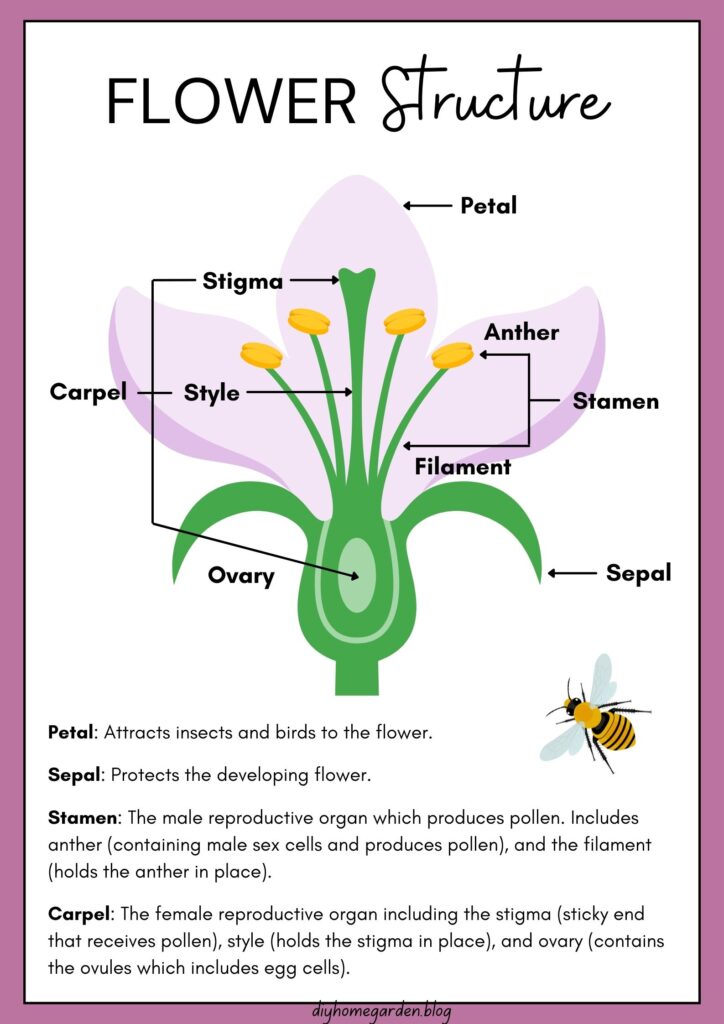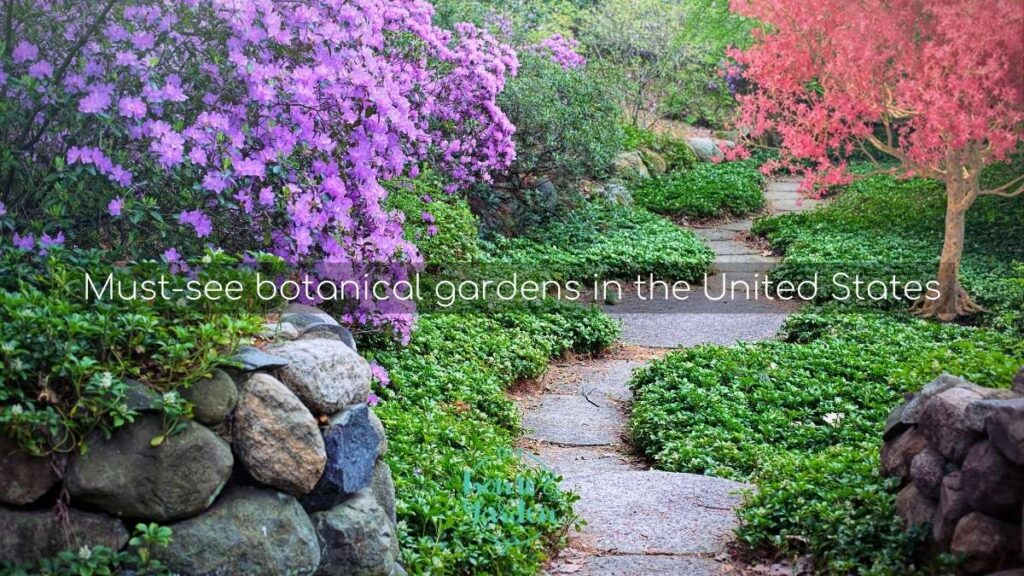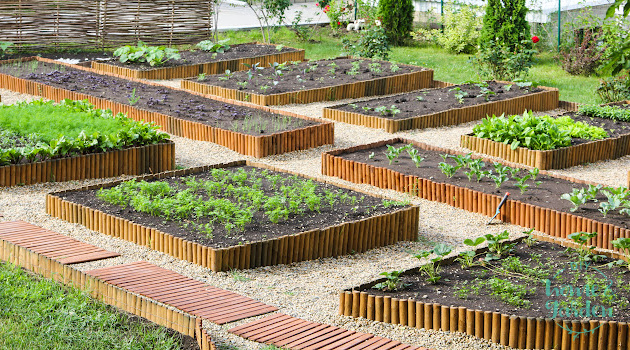Pollinator garden–what is it? How does it benefit your gardening or landscaping project, and how do you even build one?
A pollinator garden is designed to attract and sustain pollinators—by providing food in nectar and pollen—to ensure that these beneficial insects hang around to keep pollinating crops for continued vegetable and fruit production.
Table of contents
- What Is Pollination?
- Frequently Asked Questions about Pollinator Gardens and How to Attract the Beneficial Insects
- How do you create a pollinator garden?
- How do I make my garden pollinator-friendly?
- Planting native species
- Selecting flowers according to bloom times
- Providing a water source
- What plants attract pollinators?
- Is honeysuckle good for pollinators?
- Are geraniums good for pollinators?
- Are peonies good for pollinators?
- How do you attract bees for pollination? To be specific…How do I attract bees to my garden for pollination?
- What color do bees hate?
- What smells attract bees?
- Can I buy bees to pollinate my garden?
- What kind of flowers do butterflies pollinate?
- Benefits of a Pollinator Garden
- The Takeaway: A Pollinator Garden Supports Biodiversity
What Is Pollination?
As you may already know, pollination is the transfer of pollen grains from the male part of a flower (anther) to the female section of a flower (stigma); and usually occurs in two forms—cross-pollination and self-pollination.
Pollinators more than often fulfill the cross-pollination bit.
Whether tiny as a window box or as huge as a meadow that occupies your entire yard—as long as the garden is planned correctly and laid out—the pollinators will stay true to their course.
The key is to have the flowers bloom throughout the growing season to have a consistent supply of pollen and nectar.
Note that you have to grow native plants but in a few instances, also incorporate the non-native species as there are pollinators and beneficial wildlife that favorite them. Even so, focus more on the native plants.

But before we dive into all that, here are the answers to some of the commonly asked questions about these gardens—to help you better understand how to design them and keep those pollinators coming back!
Frequently Asked Questions about Pollinator Gardens and How to Attract the Beneficial Insects

How do you create a pollinator garden?
To begin with, you want to ensure your location provides adequate room for your chosen pollinator plants and, of course, the right growing conditions for the plants to thrive.
Remember, a good garden layout helps with proper plant composition, attracting various species of pollinators.
Then…what is the best location for a pollinator garden? Below are a few key considerations to look into:
Sunlight
Both pollinator plants and pollinators crave sunlight for nourishment, so ensure the location provides adequate sun exposure.
On a sunny day, take pictures of your garden—at nine in the morning, at noon, and at three—documenting how much light the location receives.
By keenly monitoring the sun’s movement throughout the day, you’ll probably notice some garden sections receive full sun while others partial or even complete shade.
Most native flowers are very adaptable, tolerating varying shade levels; however, some thrive in full sun. Be sure to plan accordingly.
Soil
Ensure the native plants and flowers you intend to grow are well suited to your area’s soil type.
Water
The plants should also be well adapted to your climate’s amount of rainfall. Otherwise, they may never survive.
During the first two years, particularly in the dry months, irrigate adequately and regularly for strong root development and maximum blooms.
How do I make my garden pollinator-friendly?
A few vital beneficial practices to help make your garden pollinator-friendly include:
Using plants that offer a source of food, nesting points, and a conducive environment for the pollinators to raise their young ones throughout the year.
Establishing the garden in a sunny location provides at least 6 hours of sunlight each day to help keep the pollinators active.
Shelter: Strong winds make it hard for the insects to fly between flowers and ensure that the area is sheltered from strong winds.
Planting diverse sets of flowering plants with varying colors, shapes, and sizes to attract different pollinator species and meet their feeding needs.
Growing the plants in clusters so the pollinators can easily collect the pollen and nectar from their favorites.
Planting native species
Most non-native plants will equally benefit pollinators, but these insects are best adapted to the local, native plants.
It’s also easier to maintain the native plant species as they’re better suited to your region’s climate and soil.
Selecting flowers according to bloom times
Plant flowers with different bloom times—to keep the pollinators visiting all through spring and summer.
Providing a water source
Pollinators need to stay hydrated too! Consider adding rocks to your birdbath to provide the insects a landing area while they drink. Small puddles are the best.
Avoiding the use of pesticides
Hand-weed or utilize chemical-free methods to control weeds and unwanted guests in the garden.
What plants attract pollinators?
Pollinators are attracted to an almost endless array of blooms. Their favorites include snapdragon, sunflower, marigold, milkweed, goldenrod, lavender, daisy, dandelion, cow parsnip, dahlia, butterfly bush, coneflower, borage, and witch hazel (best for the months of winter).
In the early spring, they also enjoy flowering trees and shrubs. Think cherry blossoms, dogwood, and forsythia.
Watch this video for some ideas of what plants and flowers you might consider:
Is honeysuckle good for pollinators?
Honeysuckle (Lonicera periclymenum) is an excellent source of nectar for pollinators, especially the bees, butterflies, and hummingbirds, which all seem to fall for the plant’s fragrant nectar.
Though most species bloom in the spring, some continue to flower throughout summer and into early fall.
Are geraniums good for pollinators?
In addition to their showy and attractive blooms, wild geraniums (Geranium maculatum), unlike other pollinator plants, feature dark directional marks on the flowers. These markings act as nectar guides for the pollinators. Therefore, it makes the entire pollination process a breeze.
The plants are also a haven for most beneficial insect pollinators, including the bumblebees and butterflies.
Are peonies good for pollinators?
Peonies are known to attract ants with their sticky, sugary secretions, but once all that is depleted and the buds open up, the insects give way for the other pollinators to enjoy the nectar.
Bees, in particular, are attracted to the densely pollinated single peonies but, at times, also dig on the doubles.
How do you attract bees for pollination? To be specific…How do I attract bees to my garden for pollination?
As is the case with attracting other pollinators, offer the buzzing buddies a friendly environment. Grow their favorite flowers, provide a water source, use natural pest control methods, and, if possible, offer bee boxes for them to nest, raise their brood, and store food.
However, remember that not all bee types will readily occupy a man-made structure.
For instance, Mason bees (carpenter bees) and many other wild bee species are solitary; they prefer to build their own shelters.
Therefore, consider leaving raw materials such as brush or dead branches out in your yard to facilitate their habitation.
What color do bees hate?
Bees avoid darker colors (like red, black, and deep brown), which are a sign of threat to them.
Most bee predators tend to be darkly toned, the reason for the insects’ aggressive behavior whenever they encounter any shades of dark color. So it’s not that they “hate” those darker shades; instead, they perceive them as a threat.
What smells attract bees?
Bees’ acute olfactory sense often drives them to scented flowers, including phlox, lily of the valley, nasturtium, jasmine, and many other fragrant bloomers.
They also find it irresistible to stay around scented herbs like rosemary, lavender, catnip, sage, thyme, basil, beebalm, and chamomile.
Can I buy bees to pollinate my garden?
Yes. You can buy or rent solitary bees from local bee networks that offer the service.
Mason bees are excellent orchard pollinators, best for berry bushes and fruit trees. They have little use for fertilizing flowers or vegetables–they are focused on the hardwoods. Unlike honeybees, the males have no sting in their tails, and the females’ stings are often too weak to penetrate the skin.
Leafcutter bees, on the other hand, are ideal for veggies.
Both leafcutters and mason bees are solitary. This fact means that all females are fertile. Therefore, they have no honey or queen to protect, so they’re not aggressive.
What kind of flowers do butterflies pollinate?
Unlike bees, butterflies are attracted to large, sweet-smelling, brightly colored flowers.
They prefer plants with broad flower umbels for stability as they feed, considering their large and heavy bodies.
Benefits of a Pollinator Garden
Besides being unfussy, beautiful, and affordable, numerous benefits come with nurturing a pollinator garden, which is relatively low on maintenance.
- Pollinator gardens are a great source of food and habitat for the beneficial insect pollinators, which in turn help boost our food basket by improving the crops’ yield and quality.
- It’s cost-effective, easy to plant, and low on maintenance, requiring little to zero care once the plants establish.
- Flexible; the gardens can be any size and still cater to a wide range of pollinators—as long as you grow the right plants.
- A pollinator garden is a timeless educational tool, excellent for introducing gardening basics and food systems to novice and beginner gardeners alike.

The Takeaway: A Pollinator Garden Supports Biodiversity
The best part about a pollinator garden is that you can work as much or less on it as possible after executing a little prep work.
Regardless of the size, just ensure it’s located in a sunny spot and offer the right conditions.
“If you build it, they will come,” paraphrasing a famous movie line. It’s that simple! Establish a pollinator garden today to support life.

